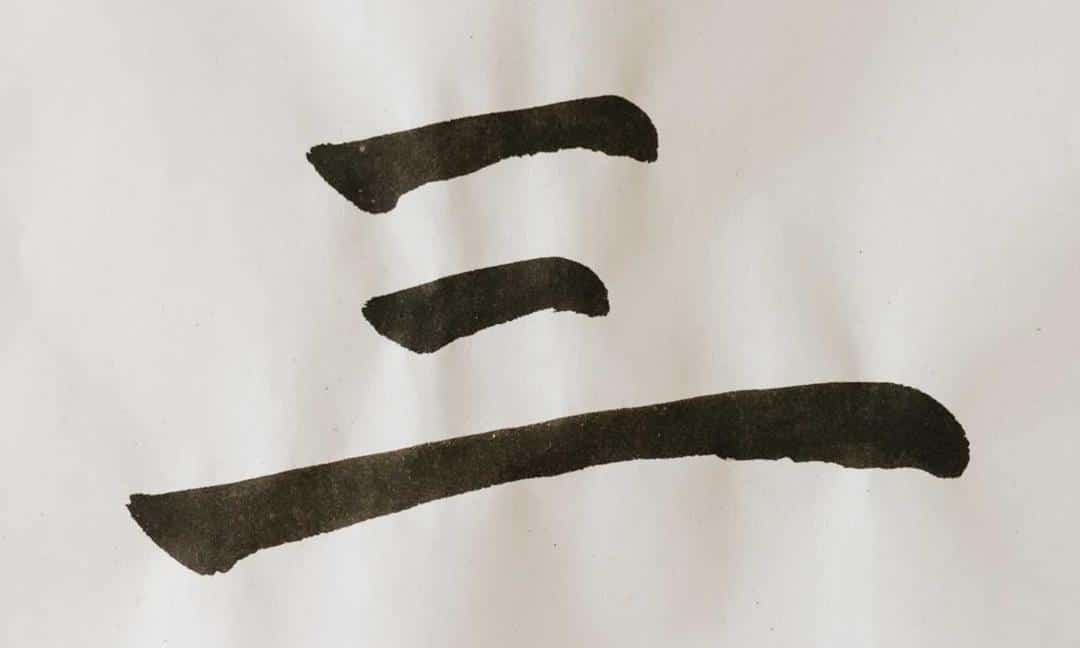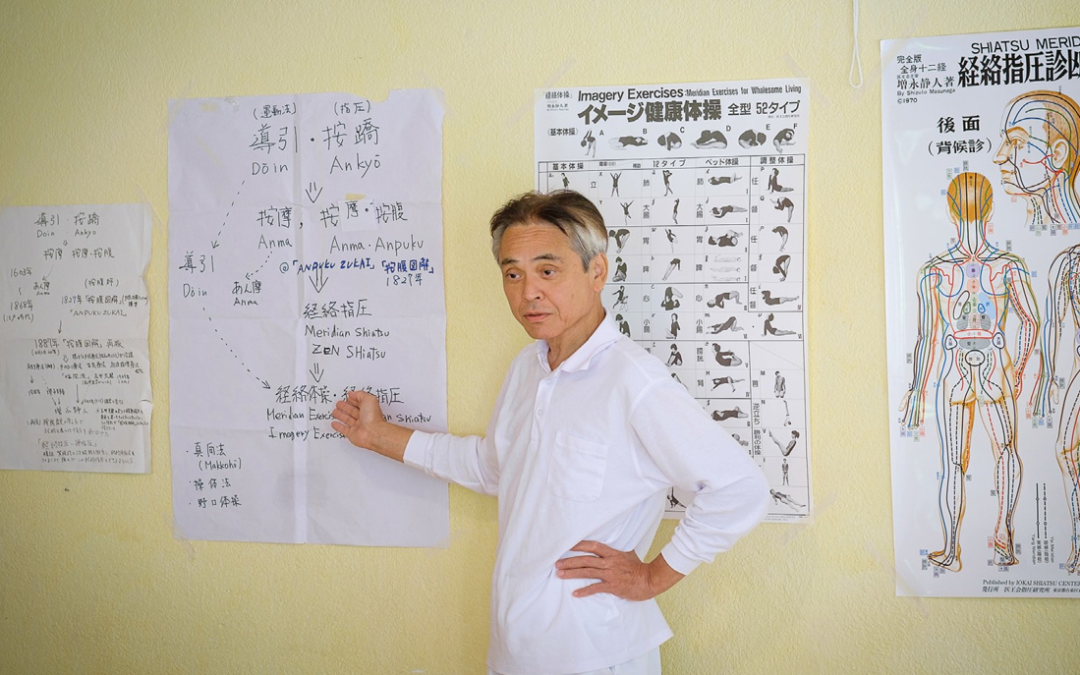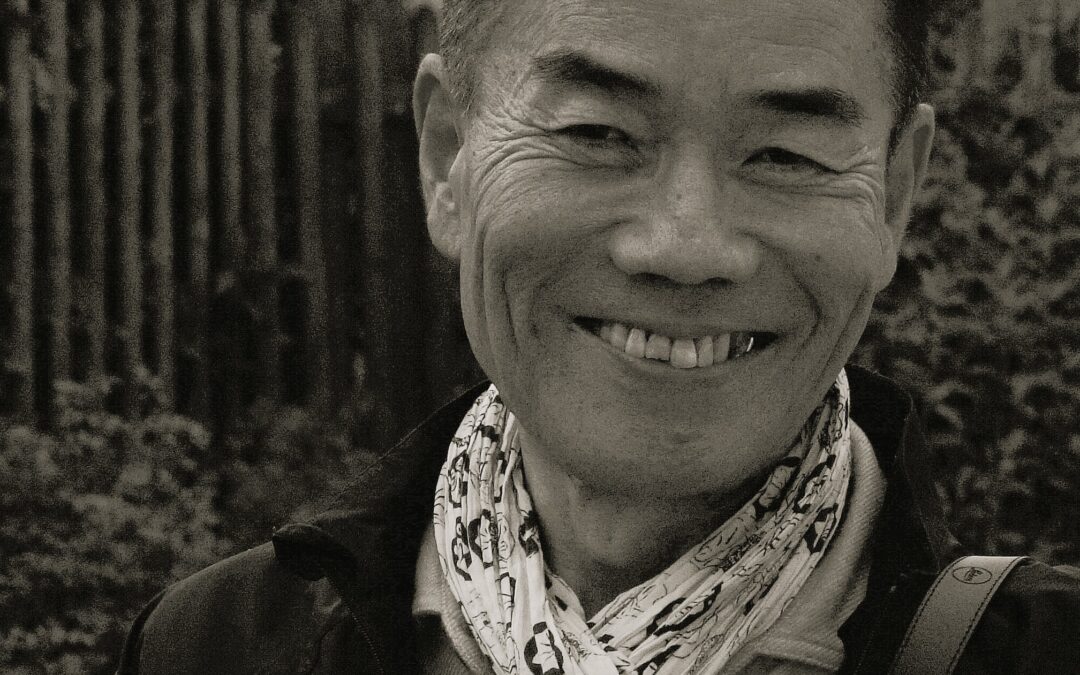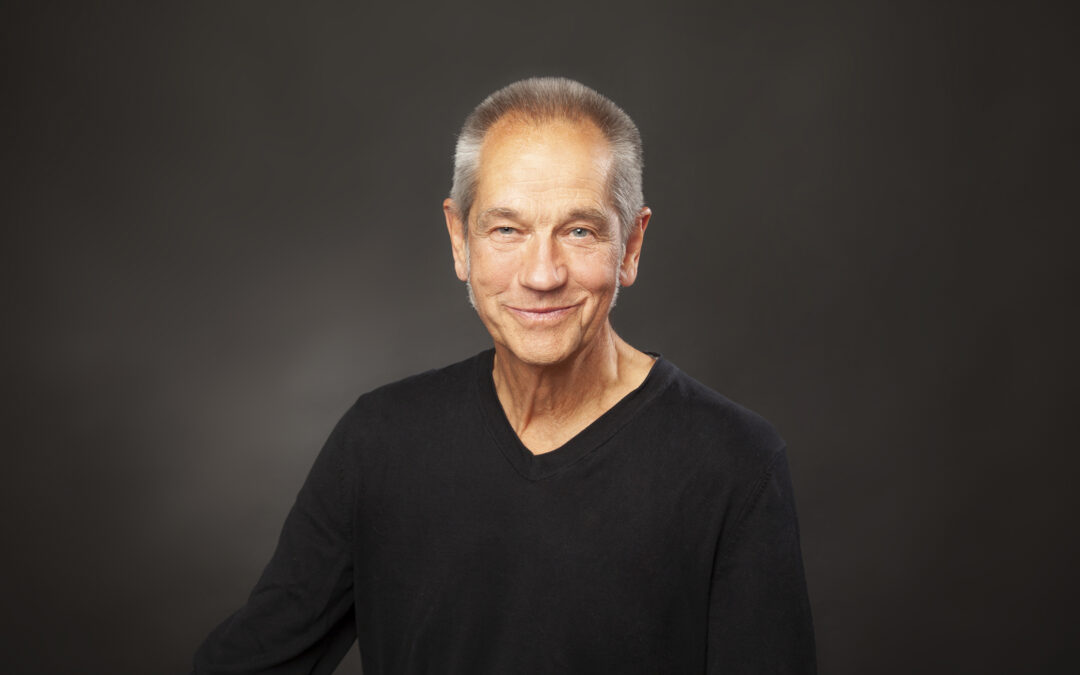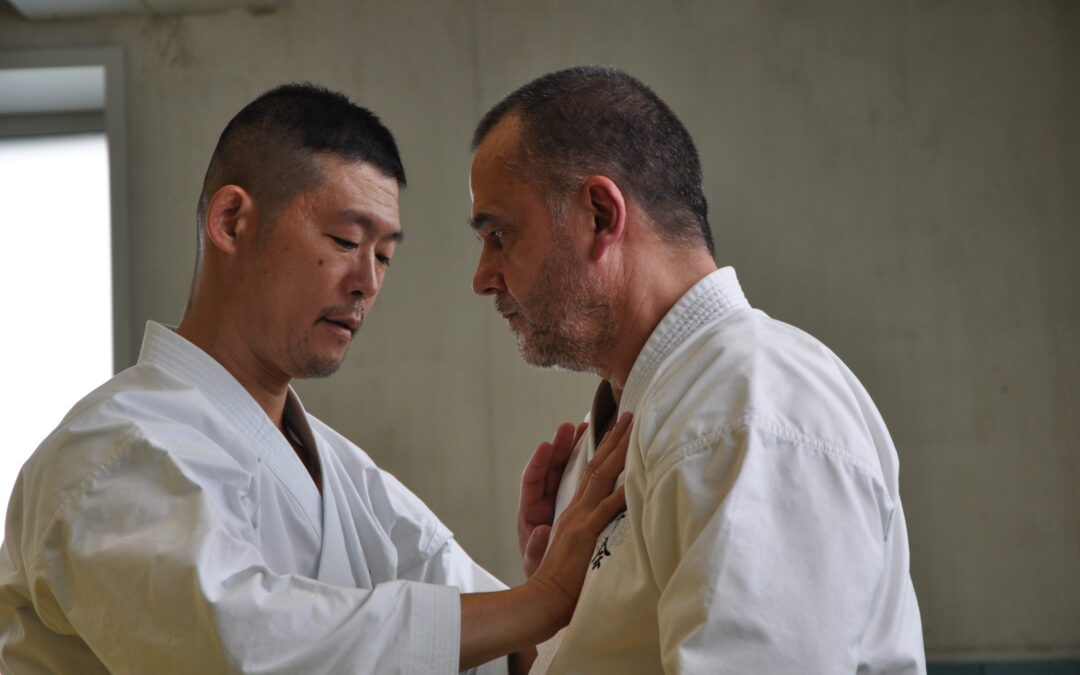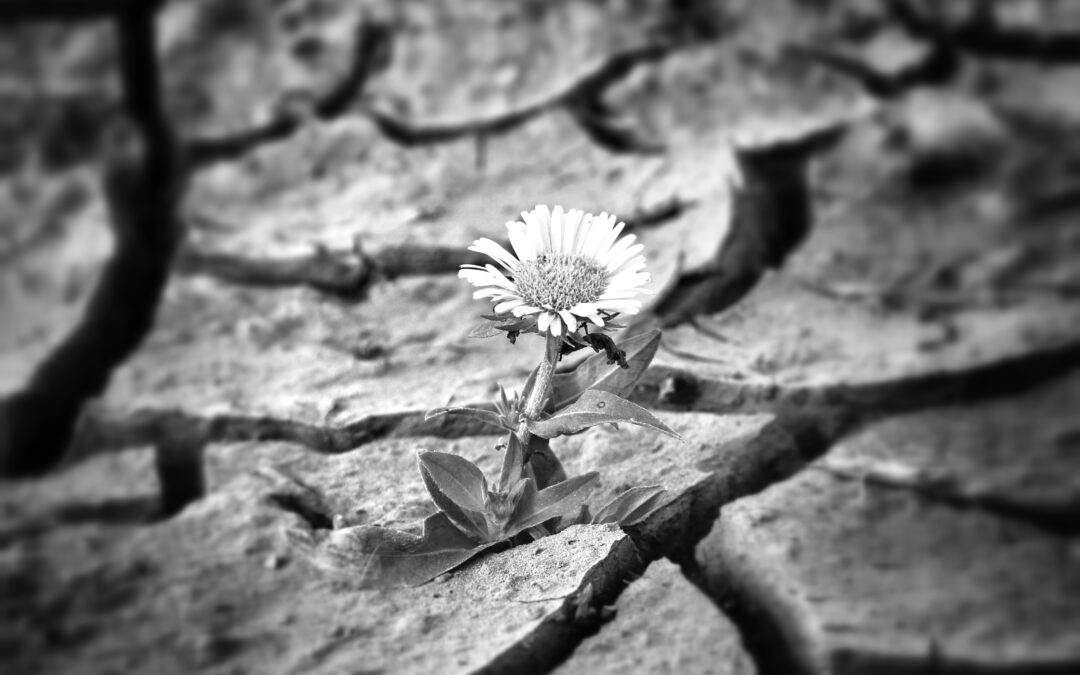Amongst the many Shiatsu schools that exist, most refer in their names or in their technical approach to the theories of Yin/Yang (which represent duality), or Wuxing (the 5 movements). But few of them bring attention to the Earth-Man-Heaven trinity, while this principle is the one that opens up the greatest number of tangible possibilities.
Some memories of youth
When I was a Student of Chinese, one of my excellent teachers was Pierre Trolliet. A geography teacher in the broad sense of the term, he always overflowed with enthusiasm and often his course would run over to tell us as much as possible about China, its culture, its geography, its history, its politics. For hours, he went through everything. Sometimes, we would meet after class over a drink to pursue captivating discussions on all sorts of topics, as long as it was about China.
A tireless traveler and researcher, I remember that he once gave me this advice: “If you go to China one day, don’t forget to count everything.” He then explained to me the meaning of Chinese numerals, at least according to his understanding, which was my first initiation into this field. Since then, I have worn out the soles of my shoes on the roads of this huge country and the whole of Asia, without forgetting to count everything I saw. I particularly stayed for a long time at the Temple of Heaven in Beijing, counting the number of roofs, terraces, columns, etc.
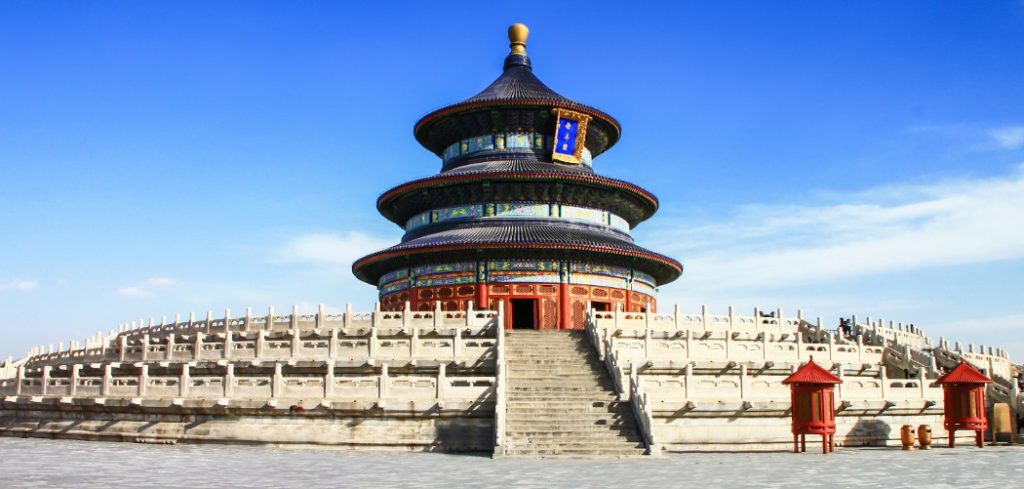
During these years of training, I also started studying calligraphy, which allowed me to discover that beyond a simple brush stroke on a sheet of paper, it is indeed an art of body and mind unified around the axis of the brush.
Calligraphy is also a highly sophisticated approach that contains many secrets, of which hidden numbers. The same was true in the study of Taoist painting where no detail of the landscape is drawn at random. Everything is carefully measured, counted, and weighed to stick as closely as possible to the symbolism of the numbers. Little by little, I discovered the incredible unity of thought of the Chinese world. Arts, crafts, martial arts, buildings, everything is organized in such a way as to consider the numbers and their symbolism. Nothing is left to chance in this area, at any time of its long civilization.
I was ultimately convinced of this more than twenty years later when, having become a Shiatsu teacher, I crossed paths with Cyrille Javary, a great specialist of the Yijing (classic of mutations) and Chinese spiritual philosophies. At one of his lectures on Chinese numerals, I learned even more precisely about their symbolism.
I understood then that not only was everything in “the Chinese world” (according to the title of Jacques Gernet’s must-read book) consistent with its numeration, but that from 0 to 10 there is a whole exciting story unfolding. Subsequently, it is not surprising that the study of Oriental medicine shows that its theory constantly works on the same basis of thought, explicitly, the unfolding of numbers in ascending order.
Pr. Trolliet’s advice was therefore good. In Chinese culture, you must always count everything.
Numerous theories
Of course, in this vast unfolding of the symbolism of Chinese numerals, especially for the first 10, many explanations or theories have flourished. It is possible to summarize them to the extreme, as for the first five digits below:
- 0 – Not very popular in China, the 0 refers to the notion of Emptiness, but not nothingness as the Indians do.
- 1 – Unity, the One, when the whole is not yet differentiated.
- 2 – The duality of Yin/Yang which explains that opposites are in fact complementary.
- 3 – The Trinity: Heaven-Man-Earth, the world becomes multiple, and Man comes into play in universal creation.
- 4 – The four directions of the Chinese compass (which are upside down from ours), then the four seasons
- 5 – The five movements (usually mistakenly called the 5 elements)
And it goes on and on. Of course, depending on the country and the culture, some theories will be more established. Yin/Yang (阴/阳) constitutes one of the most shared bases between China, Korea, Vietnam, and Japan, which is why it is often found in Shiatsu. The 5 movements are also very present in Shiatsu, because this Chinese theory has had its greatest success in Japan. The expert theorists in this field are Japanese and they have multiplied the approaches from wuxing (五行). Take for example the 5 ancient Shu points. The Chinese considered these points according to the flow of energy explanation, while the Japanese chose to explain them via the 5 movements.
We will find many other areas in which Japanese culture has taken up this theory that gave rise to the gorinto (五輪塔, literally “five-ring tower”) or the gorin no sho (五輪書 “Treaty of the Five Wheels” by the famous swordsman Miyamoto Musashi).
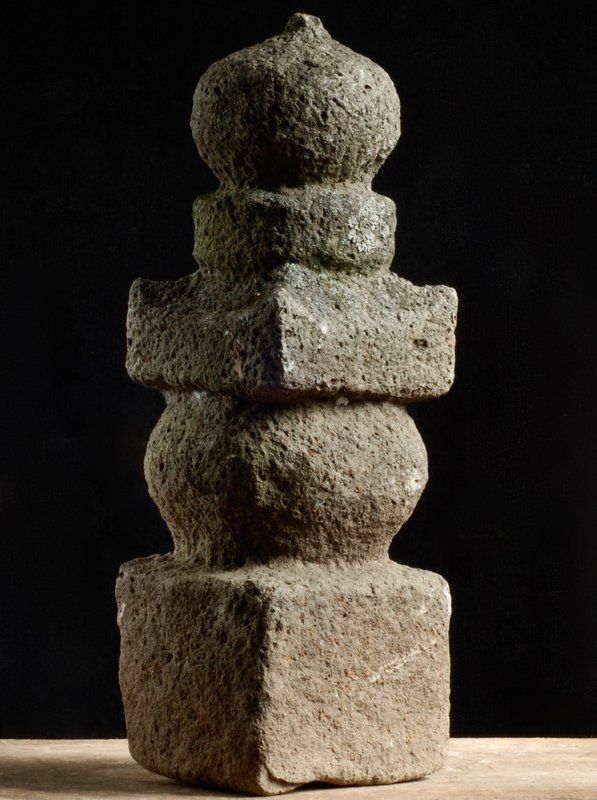
Symbolism of the number three
Each civilization has chosen to place a symbolic charge in its letters as in its numbers, with of course very different interpretations from one culture to another. However, the number 3 is the only one to have a common symbolism in – almost – all cultures, which makes it quite interesting. The number 3 symbolizes life, creation, fertility. How did that become? I will try to explain it from the perspective of the Chinese vision.
In calligraphy, when we draw a horizontal line to designate the number 1, it requires three movements. The brush is positioned from the top down, then the line goes horizontally to the right, and finally the stop movement and the lifting of the brush is done downwards. Thus, even if the untrained eye sees only a simple line, the number 1 requires a good control of three different movements. Symbolically, the Chinese say that the 1 carries in it the seeds of 2 and 3, and that its trace comes from Heaven (from the top, from the Yang) and finishes towards the Earth (the bottom, the Yin). This is obviously not happenchance but the result of a long reflection. This way of doing things is actually directly related to Laozi’s Daodejing (The Classic of the Way and Virtue) which states that: “The Tao begets the One. One begets Two. Two begets Three. Three begets the 10,000 beings. The ten thousand beings carry Yin on their backs and Yang on their arms. Mixing their breaths, they achieve harmony.” These sentences, a little cryptic at first glance, explain the dynamics of the numerals that generate each other, and especially that the Three is at the root of creation of all things. In the Chinese mind, this needed to be clear from the beginning and since Chinese is a writing of the brush, not the calamus or the feather, it was possible to insert three movements to draw the number 1.
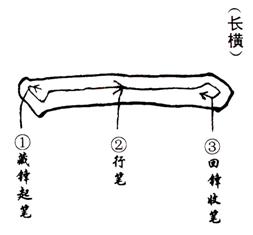
Let’s go back a bit to explain the beginning of Chinese numbers. At first there was nothing (this is the Tao). Then the One shows the Unity. And yet, by drawing a line, the 1 divides the space and begins the creation. By drawing a horizontal line, Asians indicate the horizon, which is probably the first thing our ancestors saw when they started walking on two legs. But as soon as we draw this line, we divide the world between a top and a bottom, in other words between Heaven and Earth, two powers that are symbolized by Yin and Yang. It is therefore logical that the next number, the Two, is made with two strokes on top of each other, to designate very concretely Heaven and Earth. Once created, these two forces oppose and complement each other and quite naturally a tension is set up between them, tension that will generate movement, then creation.
Between the top and the bottom then arises a third line, which indicates the birth of a third power between Heaven and Earth. This is Man. Like all the first people, it was necessary to be able to explain the arrival of the human being in the scenery. This process of creation is very interesting, because it immediately teaches us that Chinese thought does not stop at duality, in which Western thought has remained stuck (good-evil, white-black, etc.), but progresses into a ternary system. It is in the image of the man and the woman who creates the child. In turn the child will grow up and seek his complementary opposite and from their duality a new being will be born. It is the very principle of life and the creation of life that explains the end of Laozi’s quote: “The Three begets the 10,000 beings.” It is therefore from the number three that all the creative forces will express themselves and life will diversify into a multitude of ramifications, species, families … In many parts of the world, the number three was first represented in the form of a triangle, a ternary geometric figure par excellence, with a tip up or down. We can easily see the symbolic representation of the male sex (point up) and the female sex (point down), which brings us back once again to the principle of fertility and therefore life.
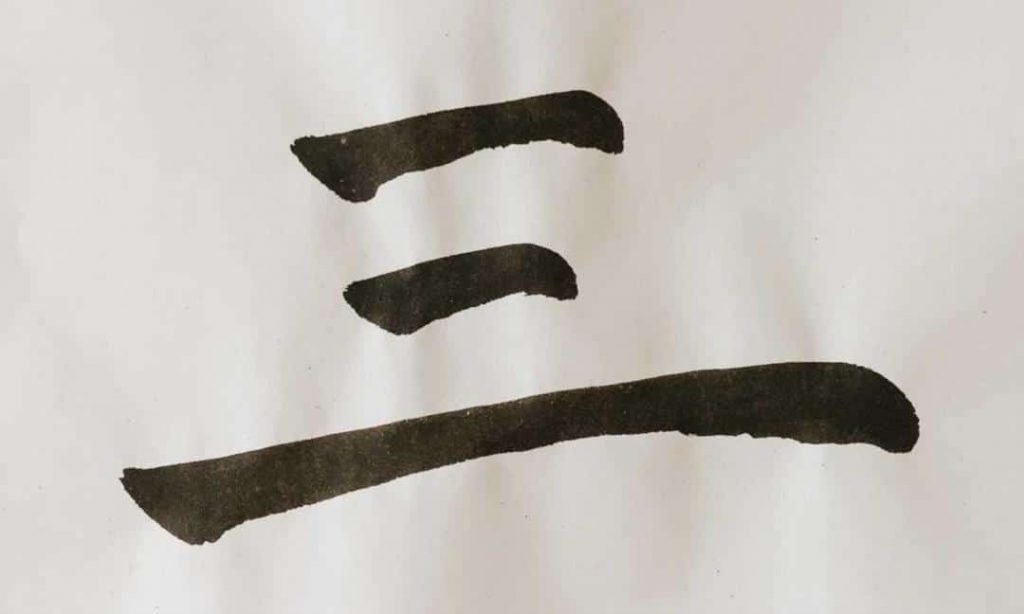
The second interesting thing in the number three is the birth of the third element between the powers of Heaven and Earth. The three lines are horizontal. The one in the middle represents the human being who has just been born. He is lying down. It has not yet straightened up. But when it does, it immediately touches Heaven and Earth. It becomes the de facto link that connects the top and the bottom, the unique hyphen, a reminder of the principle of Unity. Except that from the number three, the Unity can only be obtained from the verticality of the individual. The character then takes on a completely different meaning, that of a verb gōng (工) which means “to work”. In other words, work, the only true work of the human being, is to straighten up (on all its levels) and make the link between Heaven (天 tiān, literally “that which is above what is great”) and Earth (地, dì).
The gōng character (工) teaches us yet another thing: Heaven and Earth touch Man when he straightens up. In the Judeo-Christian conception, Heaven is an unreachable place where an inaccessible old bearded man sits. Believers spend their lives reaching towards Heaven without ever being able to hope to touch it. For the Chinese, Heaven begins exactly at the top of the skull, (hence the importance of the bái huì point, 白会the 100 meetings, VG20), while the Earth is there just under our feet (in contact with the yǒng quán points, 涌泉 gushing fountain, R1). It is not necessary to exhaust oneself all one’s life trying to reach Heaven since it is waiting for only one thing: for Man to straighten up (physically, intellectually, emotionally and spiritually), which is within the reach of all those who take the trouble to do so.
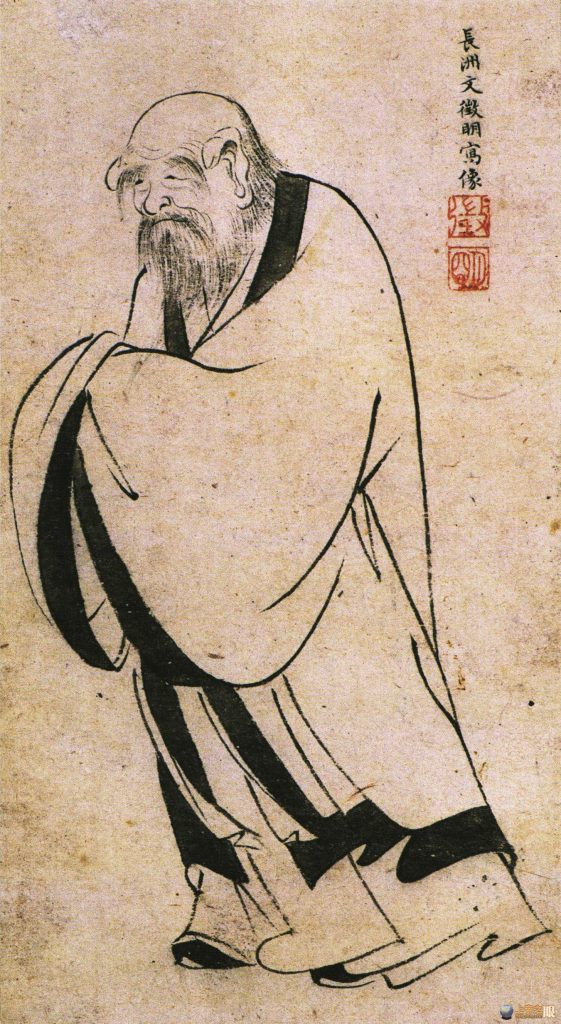
Microcosm-macrocosm
Also, in Chinese symbolism there is another character that takes up the number three and the notion of vertical unity, it is the character of the king (王, wàng). If the Man of virtue can work on himself to create through his body a bridge between Earth and Heaven, the king is responsible for doing the same thing whilst taking care of humanity that is still lying down (understand: not awakened). By his very Taoist rectitude, he is the vertical link, the link of the three stratums (Heaven-Man-Earth). Later, the kings disappeared, replaced by the emperors, but the mission and the symbolism remained the same. Moreover, every year the emperor had to pray at the Temple of Heaven to receive the mandate of Heaven, that is to say to receive the oracles that allowed him to predict harvests, floods, invasions. If he was wrong, he had to be wary! If the Chinese emperor was in fact all-powerful, the only time he became vulnerable was during this ceremony. An error in one of his predictions meant that he had lost the mandate of Heaven and therefore was no longer fit to rule since he no longer had a clear relationship with the orders of Heaven. Several emperors paid for their mistakes with their thrones, even their lives.
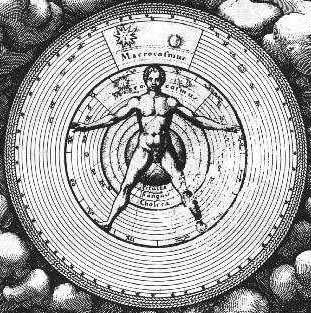
Earth-Man-Heaven represents the three primary energetic layers found in an anthropocentric representation of the world (with Man at the center). It is also a useful way to see the surrounding nature which is the macrocosm in which the human being lives. Just remember that this perception of the world dates back at least 5000 years. In their vision of things, the ancient Chinese thought that Man and nature were not separate and that one is necessarily found in the other. As a result, the microcosm of the human body had to be in the image of the macrocosm of nature which was itself the fruit of Heaven and Earth. Thus, in Chinese medicine, the number three is found in many areas.
- The body is divided from top to bottom into three areas: the top, from head to breast, represents Heaven; the belly, from the breasts to the top of the pubis, represents Man; and finally, the bottom, from the pelvis down, represents the Earth. Each of these zones can in turn be divided into three more or less equal parts. If we take the head, the forehead represents Heaven, the eyes and nose represent Man and the mouth and jaw represent the Earth. And so on for each part, which makes it possible to have an analysis tool that may be archaic, but very useful in some cases.
- If we look at the body this time in its depth, we can say that the skin is in relation with Heaven, the muscles with Man and finally the bones with the Earth.
- The placing of fingers for taking pulse uses the same division into three sections, although one could easily place four fingers. But of course not! The top is called Thumb, the middle the Barrier and the bottom the Foot, and they are sometimes called the positions Heaven, Man and Earth.
- Still concerning the pulse, the three depths express it even more clearly. The surface layer is Yang (Heaven), the central layer is Blood (Man) and the one against the bone is Yin (Earth).
- The rhythm of a human being in a day is also divided into three periods: the rising energy in the morning, the apex at noon and the descent. Ditto for the night.
- The life of the human being is divided into a phase of growth (childhood), stagnation (adulthood) and decline (old age).
- It is essential to know the three energy levels and to harmonize them in treatments so that the human being remains healthy: Qi (energy), Jing (essence), Xue (Blood).
- The building of these energies depends on three levels: the upper one creates energy in the chest from breathing (i.e. the celestial breath), the middle in the Stomach (from food and drink) and the lower level finalizes with the energy of the Kidneys which is both the seat of the ancestral energy (Jing Qi from the parents), the Yuan Qi (primordial energy) but also a filtering-elimination system that cleanses the body and therefore gives it better energy (three functions).
- The three dān tián (丹田, field of elixir) speak more about spiritual energy, but here again we find the three level division. Between the eyebrows is the upper dān tián, the second is at the level of the Heart and the third is related to the Fire of the Gate of Life.
And I’m sure that by looking a little more, we would find more ternary systems within the body, in its Chinese meaning of course.
The Trinity in Ryoho Shiatsu
The implementation of a style or current of Shiatsu requires a long reflection. Each teacher spends years refining his technique, the result of years of work, learning and observation. In Ryoho Shiatsu we have chosen to address all the existing theories and their applications, but the emphasis is on the trinity, which does not mean that the other systems are worse or better. It is a choice justified by the abundance of creation from the trinity.
The first thing we sensitize students to is the notion of movement of the practitioner in the main position called “lunge”. Generally, we see practitioners move in two stages: one to advance the weight of the body, two to remove the weight of the body. But this has several disadvantages, especially in terms of biomechanics. There is often tiredness and then pain that arises in the sacro-lumbar joint, because this back-and-forth movement requires a constant effort on the part of the practitioner. It is more relaxing to use three strokes, one to straighten up and place (effort) vertically from the pressure point, two to allow the weight of the body to drop it downwards (loosening), three to withdraw (effort). The dynamics are not the same and neither is fatigue at the end of a day of treatments.
The second three-step notion advocated by Ryoho Shiatsu is that of rhythm in the pressure. A slow pace will provide a completely different effect from a fast pace. Depending on the desired effect, the rhythm can be changed. A rhythm of pressure that lasts only one second (as is done in the martial schools Jigen ryu or Hakko ryu) will energize the person. A rhythm that is around three seconds (as in a Namikoshi school) will tend to energize and relax the muscles. A rhythm of around 6-7 seconds will work only on the relaxation. Of course, it is possible to go beyond this last pace, especially when we seek to work energetically on a specific point to remove an imbalance.
To name just three notions among many others addressed in Ryoho Shiatsu, we also insist on the depth of the pressure. A surface pressure will act very strongly on emotions that are often on edge. A pressure to the middle layer will be excellent to relax the musculoskeletal system or to act directly on the zangfu (脏腑, organs and viscera). A deep pressure will reach down to deep resistances, chronic pathologies, or seek out energy from the bottom of the individual in to bring it to the surface.
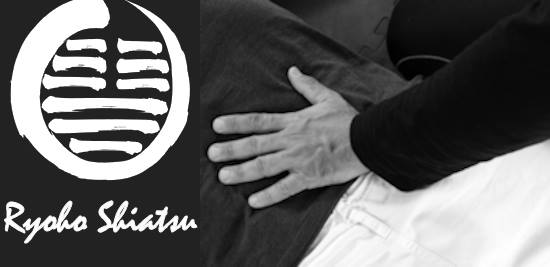
We could develop many other aspects that make Ryoho Shiatsu specific, especially in terms of treatment (treat the top, bottom and center), touch (rhythm, depth, movement), technique (dispersion, accumulation, stimulation), meridians (Extraordinary meridians, Jing meridians and Luo meridians), pathological phases (rising phase, stagnant phase, evacuation phase), pathology categories (Emptiness, Stagnation, Fullness), life advice (leading a life that is both physical, spiritual and mental), lifestyle (sleeping, activity, clearing the mind), sports hygiene (building muscle, suppleness, resting) or even how to act for the practitioner (listening/observing, speaking, touching), etc.
This is why, this schools’ studies are rich and make it possible to address most of the disorders that a person encounters during his life.
Author : Ivan Bel
Translator : Abigail Maneché
- Book review: “Another self” by Cindy Engel - 30 September 2024
- 24-26 October 2025: Master Class in Vienna (Austria) – Shiatsu and martial arts - 20 August 2024
- Lembrun Summer Intensive Course – July 6 to 12, 2025: Digestive System Disorders, Advanced Organ Anatomy, and Nutrition - 4 August 2024
- Anpuku Workshop with Ivan Bel in London – 7 & 8th, June 2025 - 22 June 2024
- Interview with Wilfried Rappenecker: a european vision for Shiatsu - 15 November 2023
- Interview : Manabu Watanabe, founder of Shyuyou Shiatsu - 30 October 2023
